
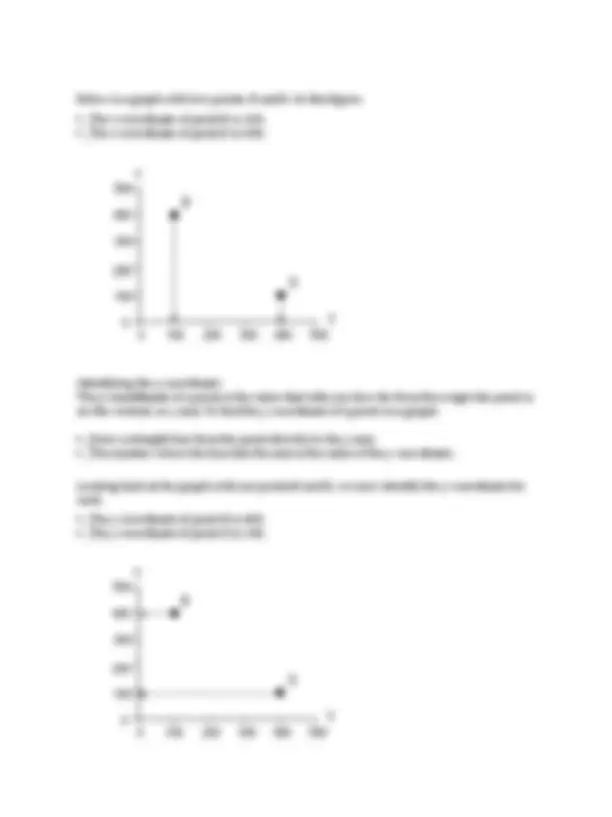
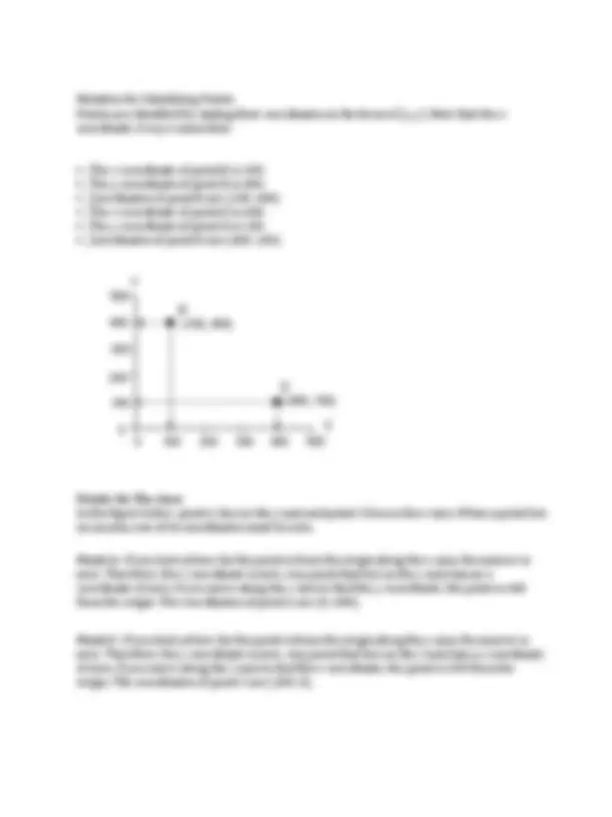
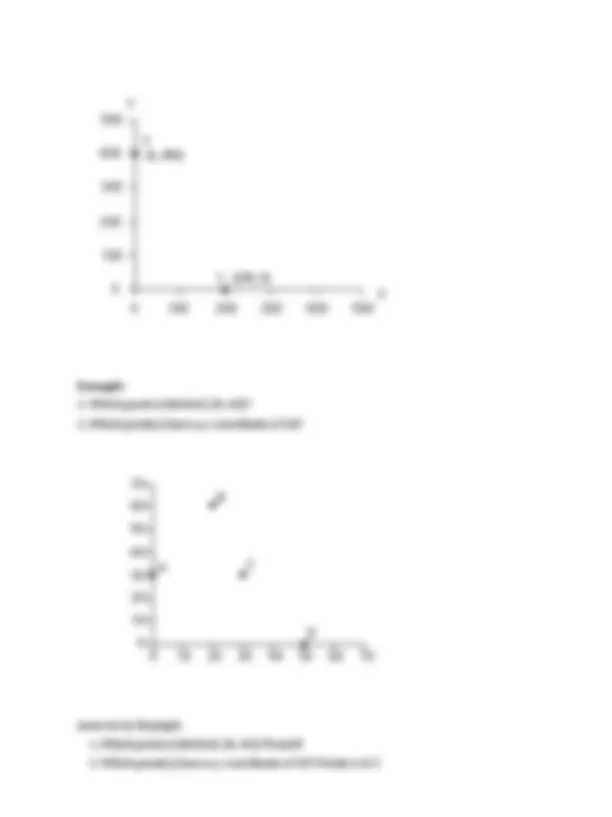
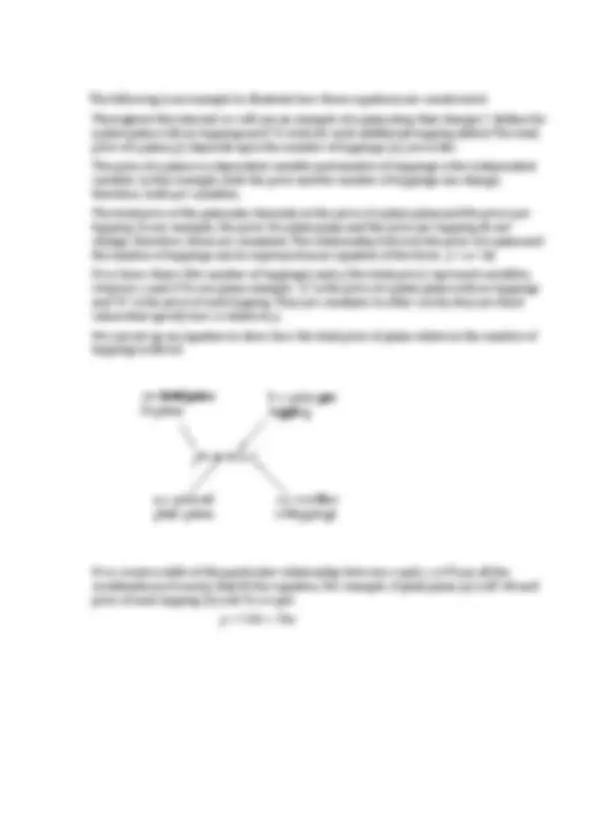
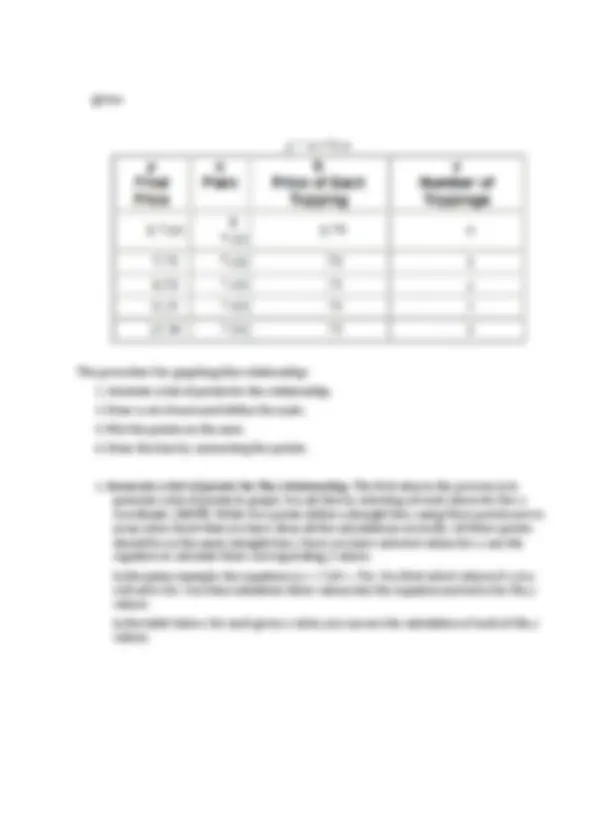
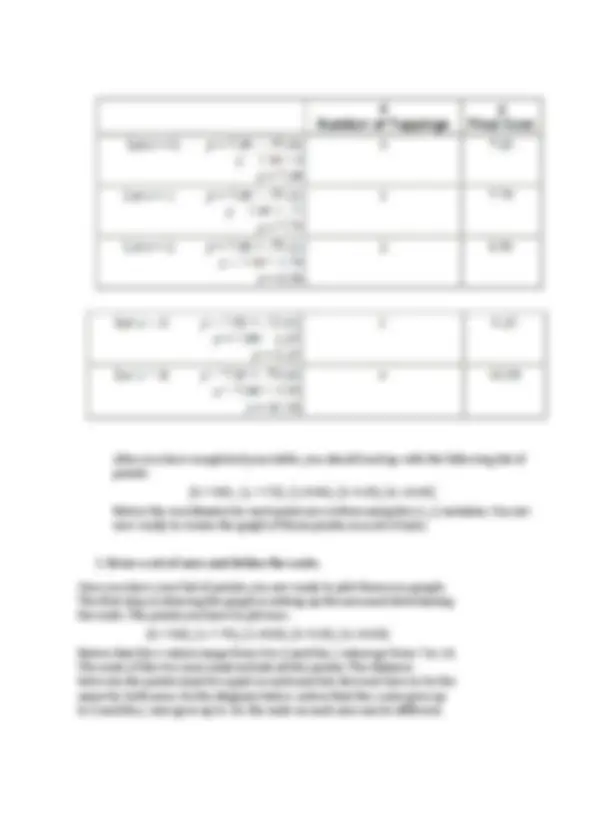
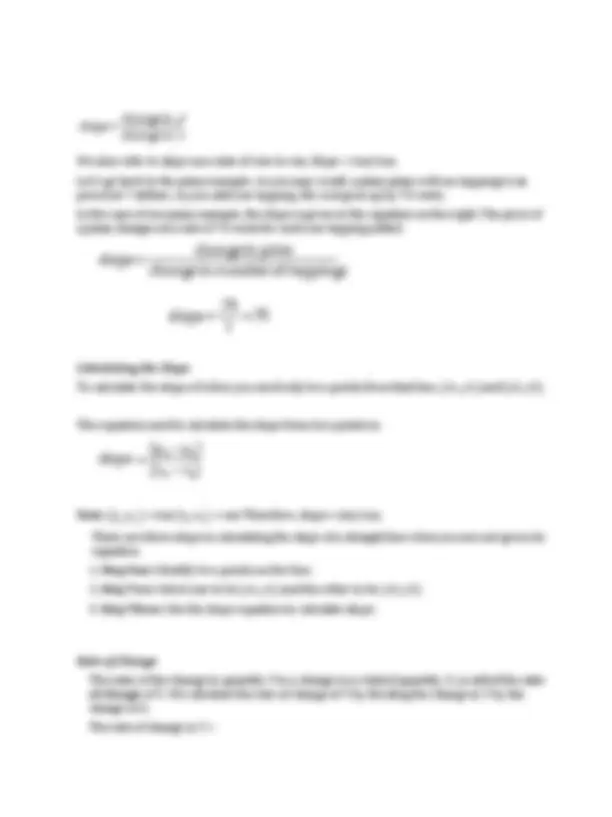
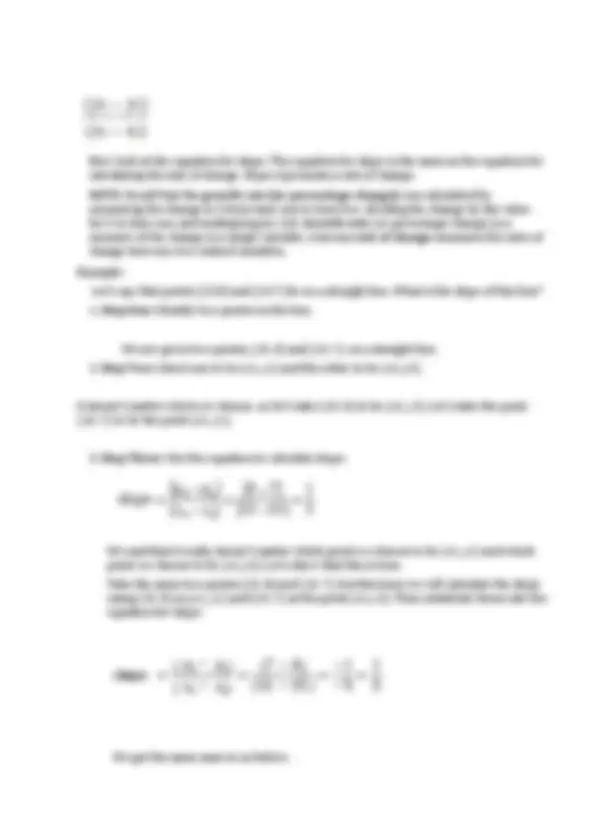
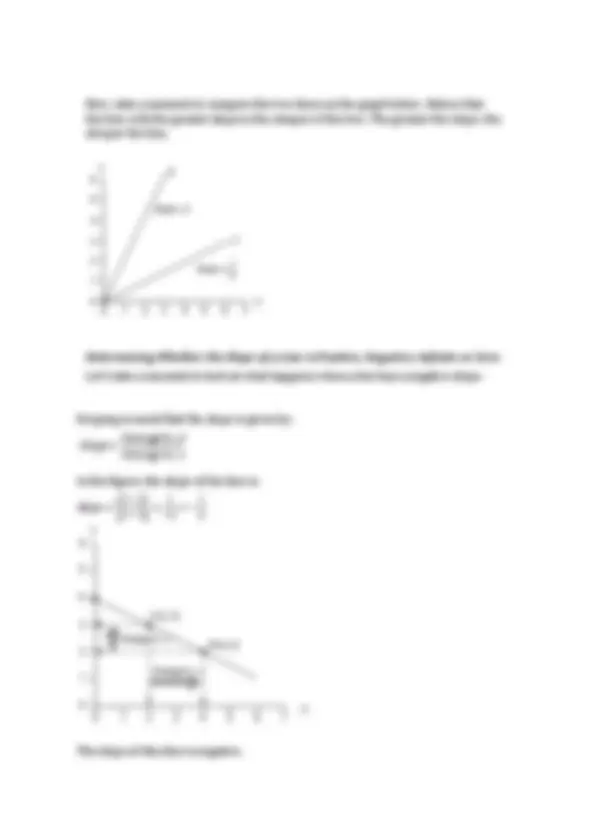
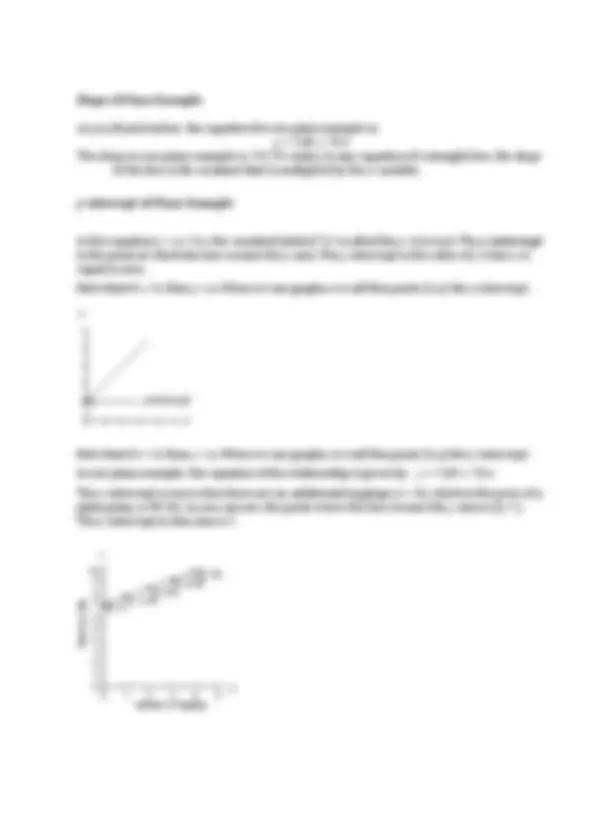
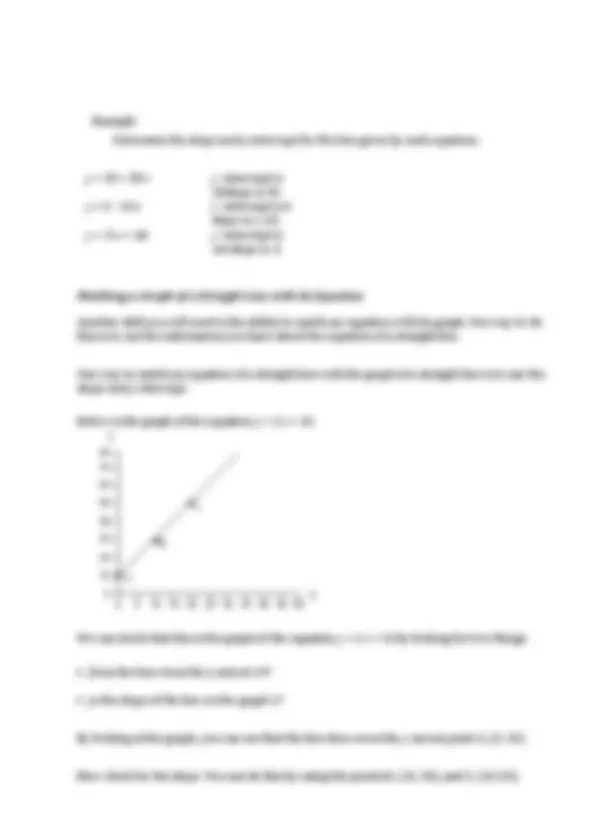
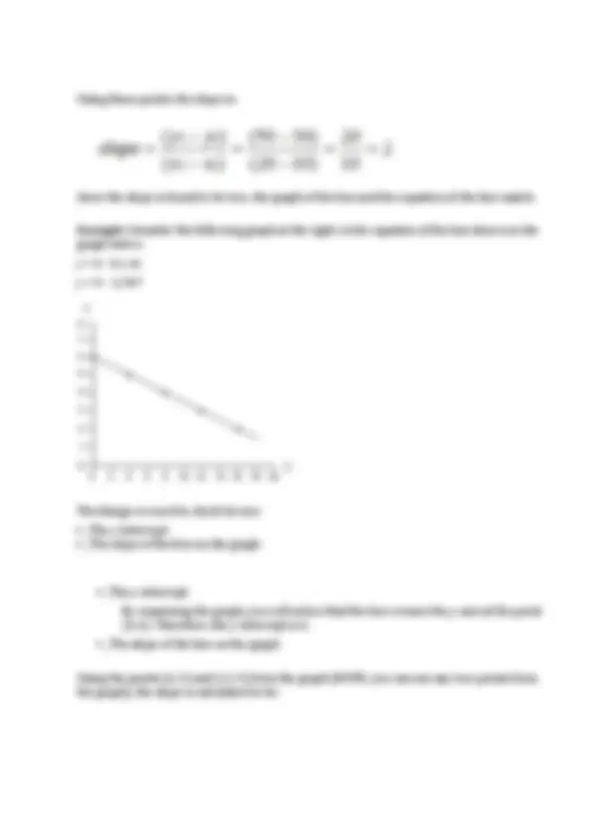
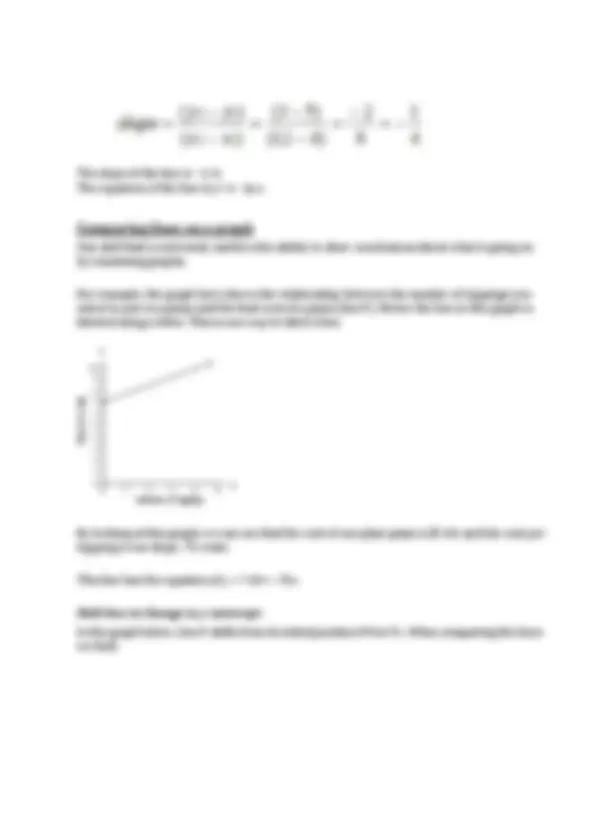
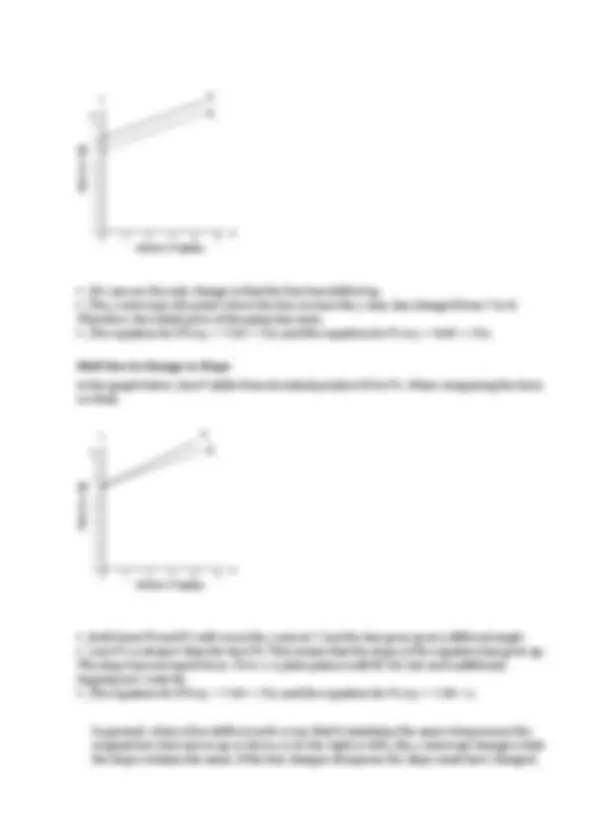
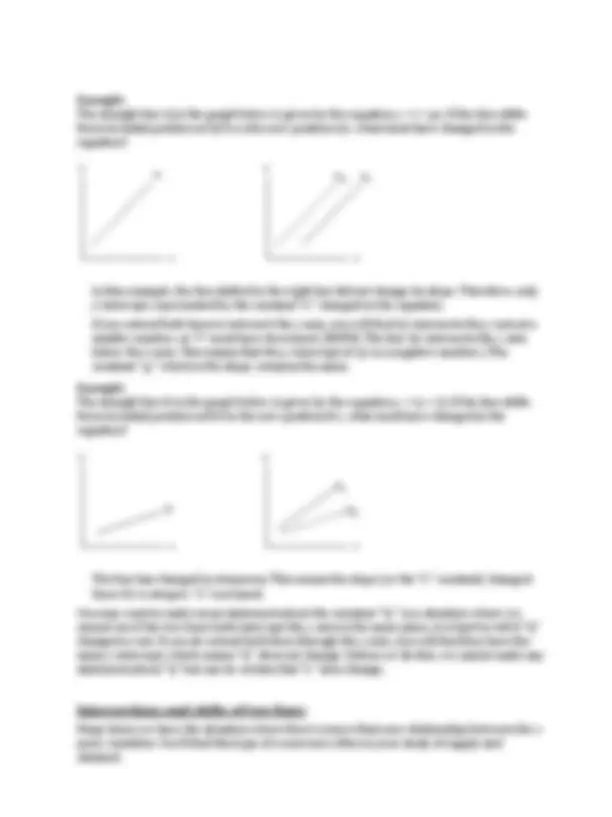
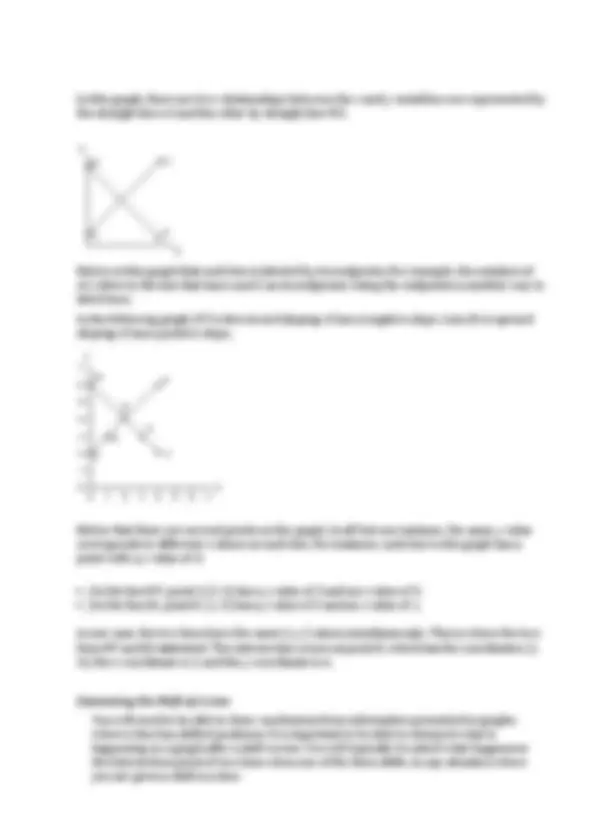
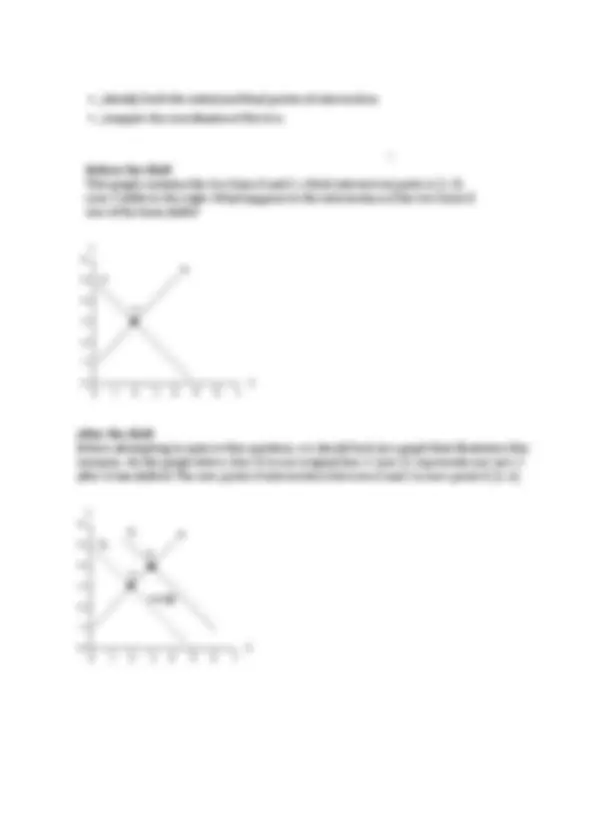
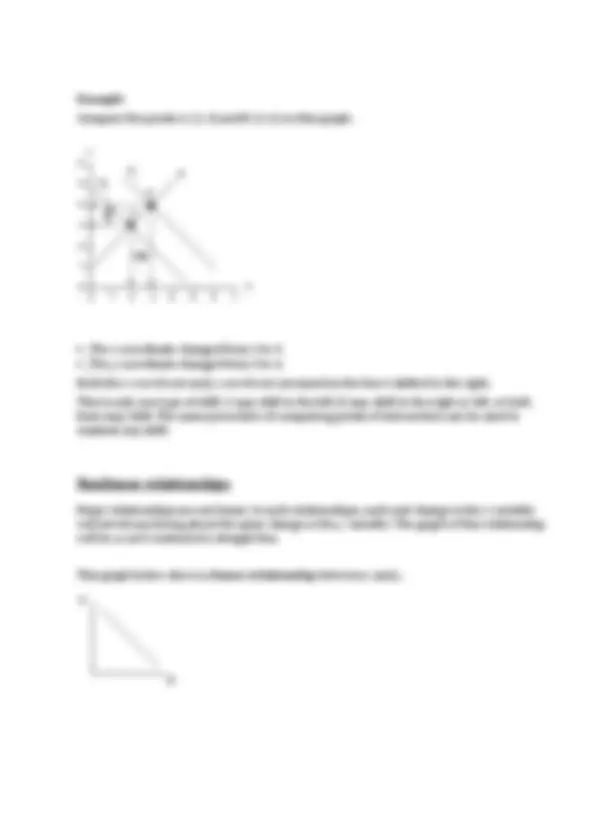
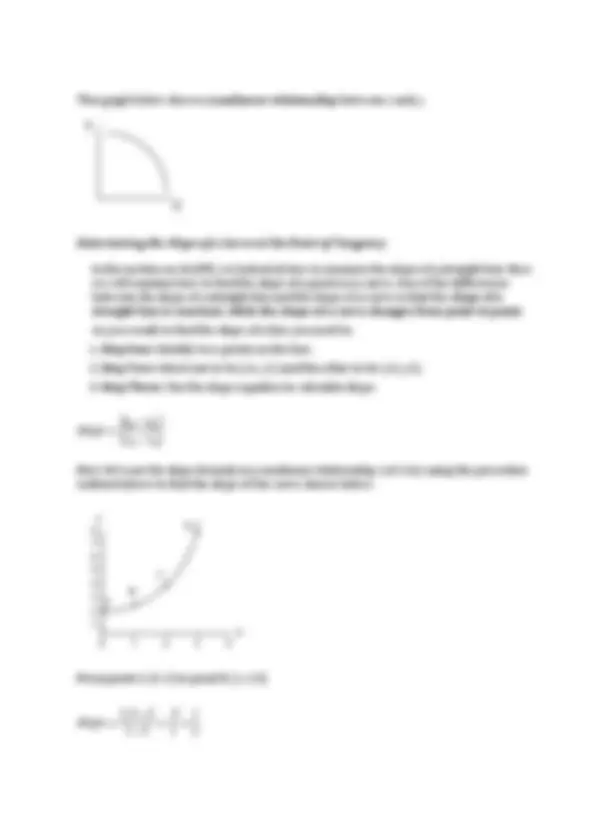
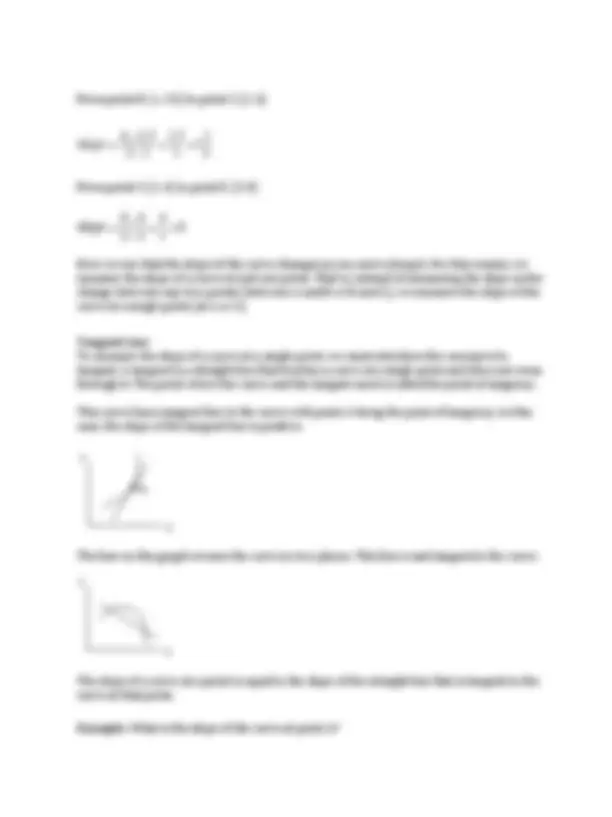
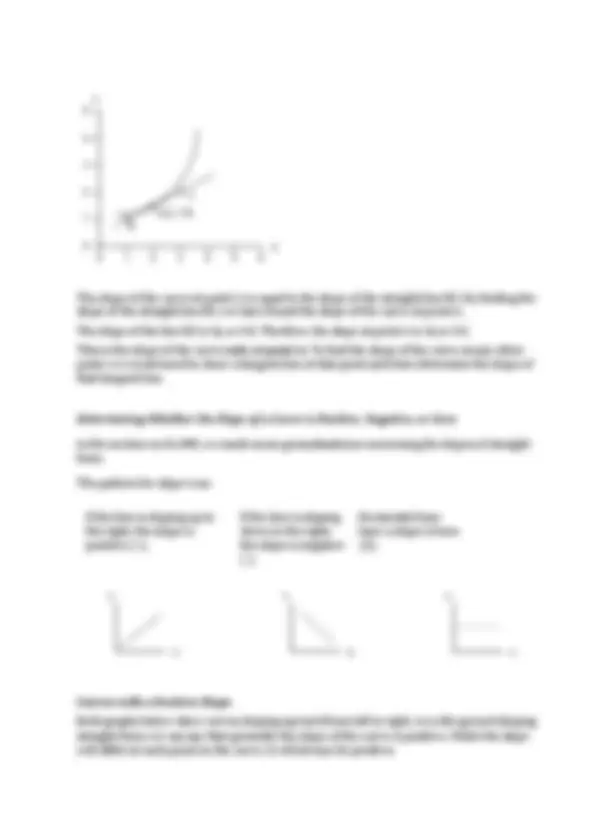
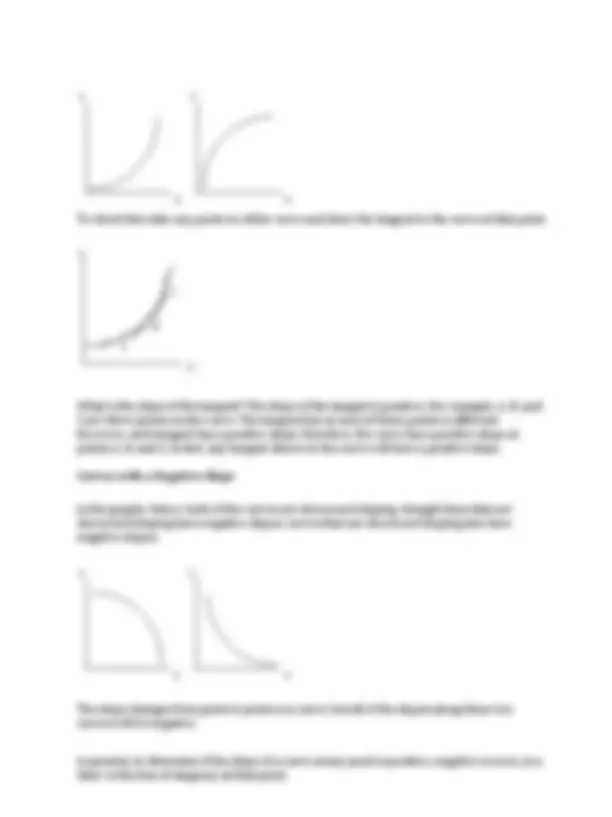
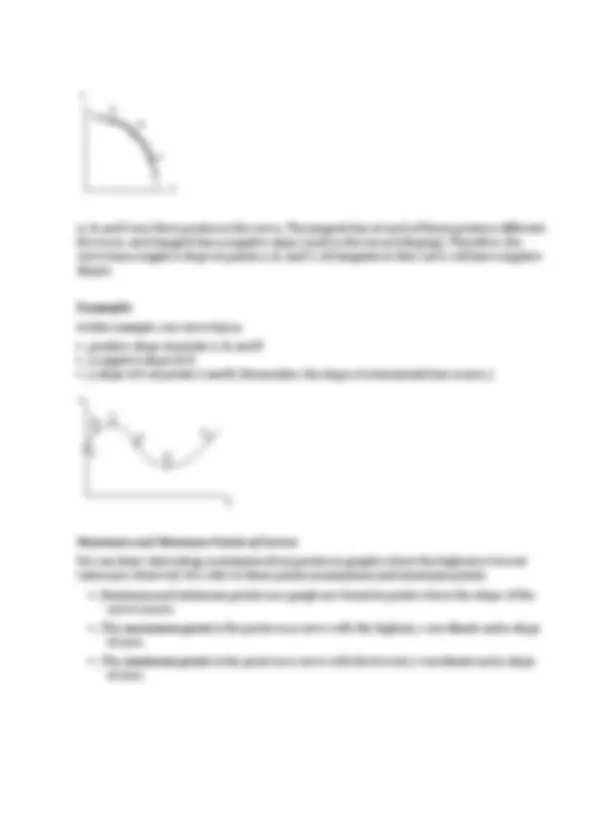
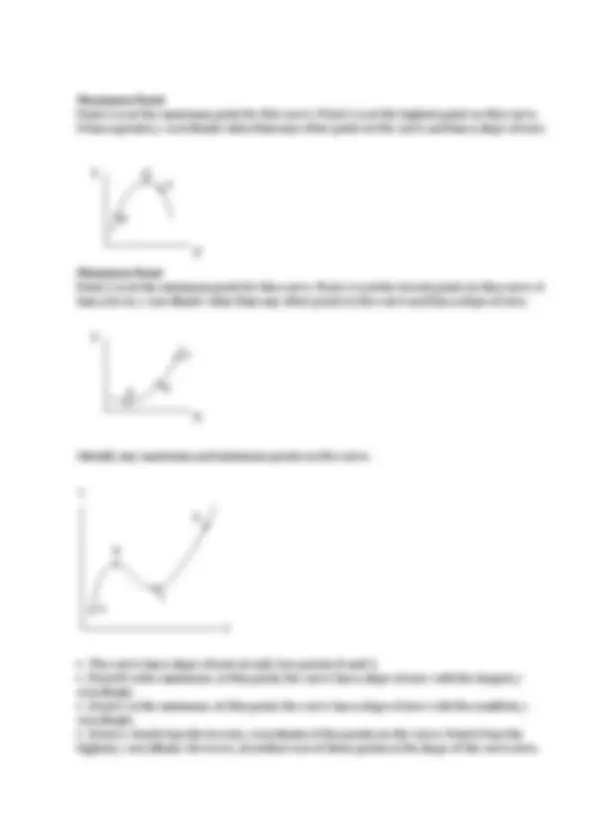


Study with the several resources on Docsity

Earn points by helping other students or get them with a premium plan


Prepare for your exams
Study with the several resources on Docsity

Earn points to download
Earn points by helping other students or get them with a premium plan
Community
Ask the community for help and clear up your study doubts
Discover the best universities in your country according to Docsity users
Free resources
Download our free guides on studying techniques, anxiety management strategies, and thesis advice from Docsity tutors
An introduction to the elements of a graph, including coordinates and the concept of slope. It covers how to identify the x and y coordinates of points on a graph, and explains the meaning and calculation of slope using examples and equations. The document also discusses the relationship between variables and generating points for graphing.
Typology: Lecture notes
1 / 32

This page cannot be seen from the preview
Don't miss anything!

























Click on the links below to jump directly to the relevant section
Elements of a graph Linear equations and their graphs What is slope? Slope and y-intercept in the equation of a line Comparing lines on a graph Intersections and shifts of two lines Nonlinear relationships
We often use graphs to give us a picture of the relationships between variables. Let's first look at the basic construction of graphs.
Coordinates of Points
A coordinate is one of a set of numbers used to identify the location of a point on a graph. Each point is identified by both an x-coordinate and a y - coordinate.
Identifying the x-coordinate
The x -coordinate of a point is the value that tells you how far from the origin the point is on the horizontal, or x -axis. To find the x -coordinate of a point on a graph:
Notation for Identifying Points Points are identified by stating their coordinates in the form of ( x , y ). Note that the x - coordinate always comes first.
Points On The Axes In the figure below, point A lies on the y -axis and point C lies on the x -axis. When a point lies on an axis, one of its coordinates must be zero.
Point A --If you look at how far the point is from the origin along the x -axis, the answer is zero. Therefore, the x -coordinate is zero. Any point that lies on the y -axis has an x - coordinate of zero. If you move along the y -axis to find the y -coordinate, the point is 400 from the origin. The coordinates of point A are (0, 400).
Point C --If you look at how far the point is from the origin along the y -axis, the answer is zero. Therefore, the y -coordinate is zero. Any point that lies on the x -axis has a y -coordinate of zero. If you move along the x -axis to find the x -coordinate, the point is 200 from the origin. The coordinates of point C are (200, 0).
Example
Answers to Example
The example above shows the relationship between ticket prices and attendance. From this graph, you can see that this is a linear relationship where attendance will go down as ticket prices go up. This graph allows you to determine how much you should charge for a ticket. Using this graph involves an understanding of linear relationships and how to graph equations of straight lines.
Variables and Constants
You will often come across characteristics or elements such as rates, outputs, income, etc., measured by numerical values. Some of these will always remain the same, and some will change. The characteristic or element that remains the same is called a constant. For example, the number of donuts in a dozen is always 12. Therefore, the number of donuts in a dozen is a constant. While some of these characteristics or elements remain the same, some of these values can vary (e.g., the price of a dozen donuts can change from $2.50 to $3.00). We call these characteristics or elements variables. Variable is the generic term for any characteristic or element that changes. You should be able to determine which characteristics or elements are constants and which are variables.
Relationships Between Variables
We express a relationship between two variables, which we will refer to as x and y , by stating the following: The value of the variable y depends upon the value of the variable x. We can write the relationship between variables in an equation. For instance: y = a + b x is an example of a relationship between x and y variables. The equation also has an "a" and "b" in it. These are constants that help define the relationship between the two variables.
The following is an example to illustrate how these equations are constructed.
Throughout this tutorial we will use an example of a pizza shop that charges 7 dollars for a plain pizza with no toppings and 75 cents for each additional topping added. The total price of a pizza ( y ) depends upon the number of toppings ( x ) you order. The price of a pizza is a dependent variable and number of toppings is the independent variable. In this example, both the price and the number of toppings can change; therefore, both are variables. The total price of the pizza also depends on the price of a plain pizza and the price per topping. In our example, the price of a plain pizza and the price per topping do not change; therefore, these are constants. The relationship between the price of a pizza and the number of toppings can be expressed as an equation of the form: y = a + b x If we know that x (the number of toppings) and y (the total price) represent variables, what are a and b? In our pizza example, "a" is the price of a plain pizza with no toppings and "b" is the price of each topping. They are constant. In other words, they are fixed values that specify how x relates to y. We can set up an equation to show how the total price of pizza relates to the number of toppings ordered.
If we create a table of this particular relationship between x and y , we'll see all the combinations of x and y that fit the equation. For example, if plain pizza (a) is $7.00 and price of each topping (b) is $.75, we get: y = 7.00 + .75 x
After you have completed your table, you should end up with the following list of points: (0, 7.00) , (1, 7.75), (2, 8.50), (3, 9.25), (4, 10.00) Notice the coordinates for each point are written using the ( x , y ) notation. You are now ready to create the graph of these points on a set of axes.
Once you have your list of points, you are ready to plot them on a graph. The first step in drawing the graph is setting up the axes and determining the scale. The points you have to plot are:
(0, 7.00), (1, 7.75), (2, 8.50), (3, 9.25), (4, 10.00)
Notice that the x values range from 0 to 4 and the y values go from 7 to 10. The scale of the two axes must include all the points. The distance between the points must be equal on each axis but does not have to be the same for both axes. On the diagram below, notice that the x -axis goes up to 5 and the y -axis goes up to 10; the scale on each axis can be different.
After you have drawn the axes, you are ready to plot the points.
We also refer to slope as a ratio of rise to run. Slope = rise/run.
Let's go back to the pizza example. As you may recall, a plain pizza with no toppings was priced at 7 dollars. As you add one topping, the cost goes up by 75 cents.
In the case of our pizza example, the slope is given in the equation on the right. The price of a pizza changes at a rate of 75 cents for each one topping added.
Calculating the Slope
To calculate the slope of a line you need only two points from that line, ( x 1, y 1) and ( x 2, y 2).
The equation used to calculate the slope from two points is:
Note : (y 2 -y 1 ) = rise (x 2 -x 1 ) = run Therefore, slope= rise/run.
There are three steps in calculating the slope of a straight line when you are not given its equation.
Rate of Change
The ratio of the change in quantity Y to a change in a related quantity, X, is called the rate of change of Y. We calculate the rate of change of Y by dividing the change in Y by the change in X. The rate of change in Y =
Now look at the equation for slope. The equation for slope is the same as the equation for calculating the rate of change. Slope represents a rate of change. NOTE : Recall that the growth rate (or percentage change) was calculated by measuring the change in X from time one to time two, dividing the change by the value for X in time one, and multiplying by 100. Growth rate (or percentage change) is a measure of the change in a single variable, whereas rate of change measures the ratio of change between two related variables.
Example:
Let's say that points (15,8) and (10,7) lie on a straight line. What is the slope of this line?
We are given two points, (15, 8) and (10, 7), on a straight line.
It doesn't matter which we choose, so let's take (15, 8) to be ( x 2, y 2). Let's take the point (10, 7) to be the point ( x 1, y 1).
We said that it really doesn't matter which point we choose to be ( x 1, y 1) and which point we choose to be ( x 2, y 2). Let's show that this is true. Take the same two points (15, 8) and (10, 7), but this time we will calculate the slope using (15, 8) as ( x 1, y 1) and (10, 7) as the point ( x 2, y 2). Then substitute these into the equation for slope:
We get the same answer as before.
Pattern for Sign of Slope
If the line is sloping upward from left to right, the slope is positive (+).
If the line is sloping downward from left to right, the slope is negative (-).
This means that x and y have a positive (direct) relationship. As x increases, y increases. x and y move in the same direction.
In our pizza example, a positive slope tells us that as the number of toppings we order ( x ) increases, the total cost of the pizza ( y ) also increases.
This means that x and y have a negative (inverse) relationship. As x increases, y decreases. x and y move in opposite directions.
For example, as the number of people that quit smoking ( x ) increases, the number of people contracting lung cancer ( y ) decreases. A graph of this relationship has a negative slope.
Two Other Cases to Consider
When the line is horizontal: When the line is vertical:
We can see that no matter what two points we choose, the value of the y - coordinate stays the same; it is always 3. Therefore, the change in y along the line is zero. No matter what the change in x along the line, the slope must always equal zero.
In this case, no matter what two points we choose, the value of the x - coordinate stays the same; it is always 2. Therefore, the change in x along the line is zero.
Zero divided by any number is zero. Horizontal lines have a slope of 0.
Since we cannot divide by zero, we say the slope of a vertical line is infinite. Vertical lines have an infinite slope.
Since we cannot divide by zero, we say the slope of a vertical line is infinite. Vertical lines have an infinite slope.
Equation of a Line The equation of a straight line is given on the right. In this equation:
Each of these will be defined below.
NOTE: The equation of a line may also be given as y = β 0 + β 1 x. In this form, β 0 (beta sub-
zero) is the y-intercept and β 1 is the slope.
In general, the coefficient of x will be the slope whether it is b, m, or β 1.
Equation for Pizza Example Let's label the equation for our pizza example. The slope of the line tells us how much the cost of a pizza changes as the number of toppings change.
Example Determine the slope and y-intercept for the line given by each equation.
y = 20 + 30 x y -intercept is 20slope is 30 y = 4 - 10 x y -intercept is 4 slope is (-10) y = .5 x + .66 y -intercept is .66 slope is.
Matching a Graph of a Straight Line with Its Equation
Another skill you will need is the ability to match an equation with its graph. One way to do this is to use the information you have about the equation of a straight line.
One way to match an equation of a straight line with the graph of a straight line is to use the slope and y -intercept.
Below is the graph of the equation y = 2 x + 10.
We can check that this is the graph of the equation y = 2 x + 10 by looking for two things:
By looking at the graph, you can see that the line does cross the y -axis at point A, (0, 10).
Now check for the slope. You can do this by using the points B, (10, 30), and C, (20, 50).
Using these points, the slope is:
Since the slope is found to be two, the graph of the line and the equation of the line match.
Example Consider the following graph at the right. Is the equation of the line shown in the graph below:
y = 4 - 6 x , or
y = 6 – 1/4 x?
The things we need to check for are:
Using the points (4, 5) and (12, 3) from the graph (NOTE: you can use any two points from the graph), the slope is calculated to be: